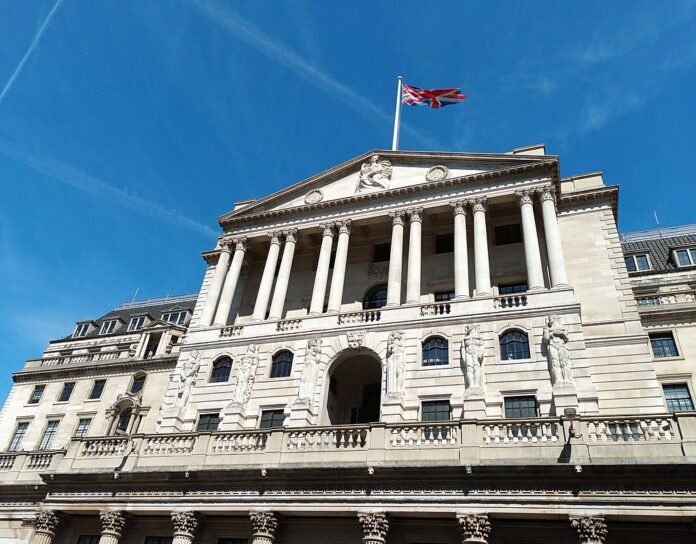The Bank of England is widely expected to cut interest rates to 4.5%, aiming to boost the slowing UK economy amidst inflation concerns.
The Bank of England is anticipated to cut interest rates later today, a move closely watched by households and economists across the UK.
Analysts predict that the benchmark rate will be lowered from 4.75% to 4.5% as the Bank comes under increasing pressure to stimulate the UK economy, which has been displaying sluggish growth.
Embed from Getty ImagesThe Bank rate serves as the primary instrument for controlling inflation, and hopes for a rate cut were fuelled by the decline in the inflation rate – which tracks the rising cost of living – to 2.5% in the year to December.
Despite this fall, inflation remains above the Bank’s target of 2%, and budgetary changes are predicted to push it upwards.
Economic uncertainty has been amplified by US President Donald Trump’s introduction, or threat, of import tariffs. These could trigger global inflationary pressure, causing a knock-on effect on price rises in the UK.
The Bank adjusts rates to manage inflation, which gauges the rate of overall price increases. By raising rates, borrowing becomes more expensive, leaving people with less disposable income. It may also encourage increased saving.
This, in turn, curtails demand for goods and moderates the pace at which prices are rising. However, it’s a delicate balancing act, as higher borrowing costs can negatively impact the economy by discouraging business investment and job creation.
Once price rises are more controlled, the Bank will consider lowering interest rates. Its base interest rate significantly influences the rates High Street banks and other money lenders charge customers for loans, credit cards and other finance deals.
This is most evident in mortgage rates. Reducing the base rate would have an immediate impact for those on “tracker” mortgages. Approximately 629,000 mortgage-holders have tracker deals. Typically, their monthly repayment would fall by about £29 as a result of the expected 0.25 percentage point cut today.
A similar number of householders have variable rate deals, and lenders will be under pressure to cut their rates if the Bank reduces the base rate.
Fixed rate deals won’t change immediately, but the expectation of further rate cuts could lead to new, or renewing, borrowers securing a more favourable deal.
Savers would be negatively impacted by a base rate fall, as the return they receive from banks would likely be reduced.
In December, when rates were held at 4.75%, the Bank’s Governor, Andrew Bailey, stated that it would take a “gradual approach to future interest rate cuts.”
He added that “We can’t commit to when or by how much we will cut rates in the coming year.”
In the minutes from that meeting, the Bank noted uncertainty “around how the measures that had been announced in the autumn Budget were affecting growth.”
Following November’s meeting, Mr Bailey declined to comment on the impact of Trump tariffs on the UK economy, stating “let’s wait and see.”
In the US, the central bank – the Federal Reserve – has signalled that it will cut rates at a slower pace this year.
Alongside the interest rate decision, the Bank will share a report on its inflation outlook, potentially hinting at its strategy for the coming months.
Economist Paul Dales from Capital Economics told the BBC that cutting the UK interest rate would balance “supporting an economy that appears to have ground to a complete halt and preventing inflation from taking off again.”
Dales added that “Trump’s tariffs are unlikely to influence UK interest rates much,” but stronger-than-forecast wage growth could influence the Bank’s decision.
The UK economy grew by less than expected in November, following two months of no growth. Further slowdown is anticipated as businesses prepare for rising costs from April due to budgetary changes like increased National Insurance contributions and higher minimum wages.
These economic figures followed recent volatility in financial markets, which pushed government borrowing costs to multi-year highs and lowered the value of the pound.
